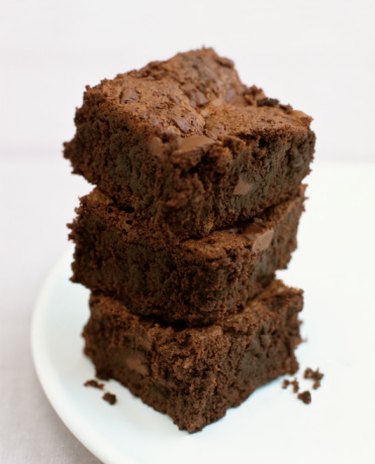Things You'll Need
Boxed brownie mix (16 ounces)
1/4 cup water
3/4 cup vegetable oil
Leavening ingredient of choice
Mixing bowl
Whisk
Nonstick brownie pan

Brownies are cake-like creations with fudge that can be gooey and soft or cooked firmly. A wide array of leavening ingredients will make these desserts rise in the oven. Knowing how to use such ingredients is necessary to present a delicious fudge brownie. This is easier to achieve with a pre-mixed brownie recipe.
Step 1
Empty the box of brownie mix into a mixing bowl.
Video of the Day
Step 2
Stir in the oil and water. Whisk the mixture for a minute until it is thick and creamy.
Step 3
Substitute an equal amount of leavening ingredient for two large eggs. For instance, 1 cup of applesauce equals two eggs; 1/4 cup of lemon juice mixed with 1 tablespoon of baking powder also creates a leavening action that mimics eggs.
Step 4
Stir in your chosen leavening ingredient and whisk the brownie mixture for an additional minute.
Step 5
Pour the finished brownie batter into the nonstick pan. Bake at 350 degrees for up to 35 minutes. Bake for 25 minutes if you like your brownies to be gooey and dense.
Video of the Day